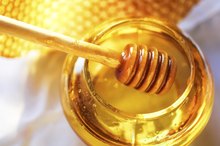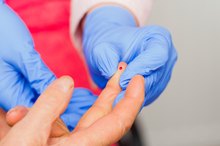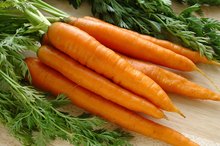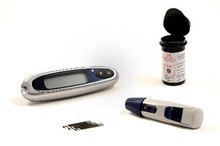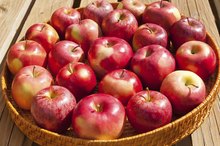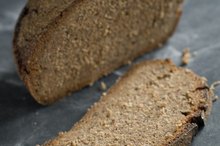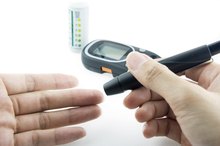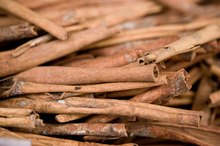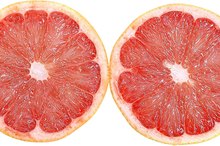What does fact checked mean?
At Healthfully, we strive to deliver objective content that is accurate and up-to-date. Our team periodically reviews articles in order to ensure content quality. The sources cited below consist of evidence from peer-reviewed journals, prominent medical organizations, academic associations, and government data.
The information contained on this site is for informational purposes only, and should not be used as a substitute for the advice of a professional health care provider. Please check with the appropriate physician regarding health questions and concerns. Although we strive to deliver accurate and up-to-date information, no guarantee to that effect is made.
Does Honey Raise the Glucose Level in the Blood?
Because it’s a sugar source, honey will surely raise your blood glucose. This can be a good thing in times of emergency, when your blood sugar is abnormally low and you need to bring it back up. On the other hand, it can be harmful if you’re managing diabetes and struggle to keep your blood sugar stable. In this case, honey is something you probably don’t want to consume regularly.
Metabolizing Honey
Honey is a concentrated source of simple sugars, namely glucose and fructose. Simple sugars require very little digestion in your gut before entering your bloodstream. Enzymes in your small intestine promptly break down the simple sugars -- if required, depending on the type -- and allow them to absorb through intestinal walls. They go directly into your bloodstream from that point, raising your blood glucose level. Cells use this glucose as fuel or energy, once insulin enters your bloodstream and opens up cell walls.
- Honey is a concentrated source of simple sugars, namely glucose and fructose.
- They go directly into your bloodstream from that point, raising your blood glucose level.
Glycemic Rating
Honey & Blood Sugar
Learn More
While honey is a natural pure sugar source, it only has a moderate glycemic index score. The glycemic index is a rating system for foods that have carbohydrates. Foods with higher numbers, over 70, are likely to spike your blood sugar quickly. As a moderate-scoring food with a score between 55 and 70, honey is likely to more gradually elevate blood glucose.
- While honey is a natural pure sugar source, it only has a moderate glycemic index score.
- As a moderate-scoring food with a score between 55 and 70, honey is likely to more gradually elevate blood glucose.
Pairing with Fiber
If you must drizzle a little honey into your morning tea, make sure you consume a fiber-rich food at the same time if you need to keep your blood glucose down. Fiber, especially soluble fiber, slows down glucose absorption, which can ultimately lower and stabilize your blood glucose. Have a bowl of oats, side of beans, handful of baby carrots or a few orange wedges. These soluble fiber-rich foods can help minimize honey’s effects on your blood glucose 3.
- If you must drizzle a little honey into your morning tea, make sure you consume a fiber-rich food at the same time if you need to keep your blood glucose down.
- Fiber, especially soluble fiber, slows down glucose absorption, which can ultimately lower and stabilize your blood glucose.
When to Be Alarmed
What Is Considered a High Blood Sugar Level for a Diabetic?
Learn More
Normal blood glucose levels fall somewhere between 70 and 140 milligrams per deciliter, although your specific normal numbers may vary slightly, the Centers for Disease Control and Prevention reports. When your sugar dips below 70 mg/dL, a spoonful of honey should help bring it up. If your blood glucose goes over 300 mg/dL and you have a hard time bringing it back down, avoid honey and other high-carb sugar-rich foods. Extremely high blood sugar can be damaging to vital organs, so you’ll need medical attention right away.
- Normal blood glucose levels fall somewhere between 70 and 140 milligrams per deciliter, although your specific normal numbers may vary slightly, the Centers for Disease Control and Prevention reports.
- If your blood glucose goes over 300 mg/dL and you have a hard time bringing it back down, avoid honey and other high-carb sugar-rich foods.
Related Articles
References
- The University of Sydney: GI Database
- USDA National Nutrient Database for Standard Reference: Honey
- Joslin Diabetes Center: How Does Fiber Affect Blood Glucose Levels?
- National Institute of Diabetes and Digestive and Kidney Diseases. Diabetes diet, eating, & physical activity. Published December 2016.
- American Diabetes Association. The big picture: Checking your blood glucose.
- American Diabetes Association. 6. Glycemic Targets: Standards of Medical Care in Diabetes-2020. Diabetes Care. 2020;43(Suppl 1):S66-S76. doi:10.2337/dc20-S006
- American Diabetes Association. 14. Management of diabetes in pregnancy: Standards of medical care in diabetes-2020. Diabetes Care. 2020;43(Suppl 1):S183-S192. doi:10.2337/dc20-S014
- Porcellati F, Lucidi P, Bolli GB, Fanelli CG. Thirty years of research on the dawn phenomenon: Lessons to optimize blood glucose control in diabetes. Diabetes Care. 2013;36(12):3860-2. doi:10.2337/dc13-2088
- American Diabetes Association. 5. Lifestyle management: Standards of medical care in diabetes-2019. Diabetes Care. 2019;42(Suppl 1):S46-60. doi:10.2337/dc19-S005
- Colberg SR, Sigal RJ, Yardley JE, et al. Physical activity/exercise and diabetes: A position statement of the American diabetes association. Diabetes Care. 2016;39(11):2065-2079. doi:10.2337/dc16-1728
- American Diabetes Association (ADA). Understanding A1C.
- Garber AJ, Abrahamson MJ, Barzilay JI, et al. Consensus statement by the American association of clinical endocrinologists and American college of endocrinology on the comprehensive type 2 diabetes management algorithm - 2019 executive summary. Endocr Pract. 2019;25(1):69-100. doi:10.4158/CS-2018-0535
Writer Bio
Melodie Anne Coffman specializes in overall wellness, with particular interests in women's health and personal defense. She holds a master's degree in food science and human nutrition and is a certified instructor through the NRA. Coffman is pursuing her personal trainer certification in 2015.
